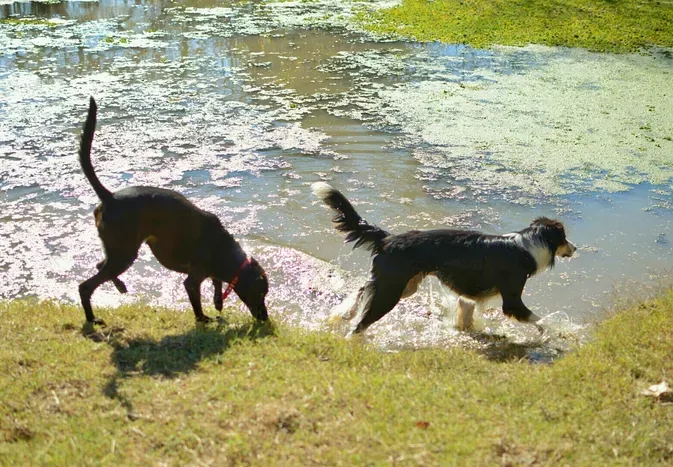How to Protect Your Dog from Blue-Green Algae This Summer
Updated on 04/26/24

Protect Your Precious Pup: A Comprehensive Guide to Guarding Against Blue-Green Algae
As the sun casts its golden rays and summer beckons, it's time to bask in the joys of outdoor adventures with our beloved canine companions. However, lurking beneath the shimmering surfaces of ponds, lakes, and even slow-moving rivers is a hidden danger that can pose a grave threat to our furry friends: blue-green algae.
What is Blue-Green Algae and Why is it Dangerous?
Blue-green algae, scientifically known as cyanobacteria, are microscopic organisms that produce harmful toxins. These toxins can cause a range of severe health effects in dogs, including:
* Liver damage: Cyanobacteria can damage liver cells, leading to liver failure and even death.
* Neurological problems: Toxins can affect the brain and nervous system, causing tremors, seizures, and even paralysis.
* Respiratory issues: Cyanobacteria can irritate the lungs, leading to coughing, difficulty breathing, and respiratory distress.
* Gastrointestinal upset: Toxins can cause vomiting, diarrhea, and abdominal pain.
Identifying Blue-Green Algae
Recognizing blue-green algae is crucial to preventing exposure:
* Appearance: Blue-green algae can appear as a thick, scum-like layer or floating mats on the surface of water. It can range in color from blue-green to olive, brown, or even reddish-brown.
* Odor: Blue-green algae often emits a musty or earthy odor.
* Location: Blue-green algae commonly thrive in warm, slow-moving, and nutrient-rich waters, such as ponds, lakes, rivers, and lagoons.
Preventing Exposure to Blue-Green Algae
Protecting your dog from blue-green algae is essential:
* Avoid suspicious bodies of water: If you notice the telltale signs of blue-green algae, keep your dog away from the water and report it to local authorities.
* Use a leash: Keep your dog on a leash when near water bodies, especially during hot and stagnant weather.
* Rinse off after swimming: If your dog has been swimming in a body of water, rinse them off thoroughly with clean water to remove any traces of algae.
* Provide clean drinking water: Ensure your dog has access to plenty of clean drinking water to avoid thirst-related water consumption.
Signs of Blue-Green Algae Poisoning
Seek immediate veterinary attention if your dog exhibits any of these symptoms:
* Vomiting or diarrhea
* Difficulty breathing
* Lethargy or seizures
* Tremors or muscle weakness
* Excessive drooling or foaming at the mouth
* Yellowing of skin or gums
Treatment for Blue-Green Algae Poisoning
Treatment for blue-green algae poisoning depends on the severity of symptoms and the type of toxin involved. Common treatments include:
* Activated charcoal: Used to absorb and remove toxins from the digestive tract.
* Intravenous fluids: To rehydrate and support organ function.
* Oxygen therapy: To assist with respiratory problems.
* Anticonvulsants: To control seizures.
* Liver protectants: To support and repair liver function.
Conclusion
Protecting your dog from blue-green algae is paramount for their health and well-being. By understanding the risks, recognizing the signs, and implementing preventive measures, you can ensure that your furry companion enjoys a safe and healthy summer while exploring the wonders of the outdoors. Remember, vigilance and early detection are crucial to minimizing the impact of potential exposure to this dangerous toxin.
Explore More Pets

Basic Training
Puppy and Baby Introductions

Working Dog Breeds
All About Search and Rescue Dogs

Dog Treatments
Puppy Vaginitis: Signs, Causes and Treatment

Dog Adoption
After More Than 1,200 Days in the Shelter, Coco Goes Home

Basic Training
How to Train Your Puppy to Go on Potty Pads

Hybrid Dog Breeds
The Difference Between a Mutt, Mixed Breed, or Designer Dog?

Dog Treatments
Nail Problems in Dogs

Puppies
7 Reasons Why Two Dogs Are Better Than One